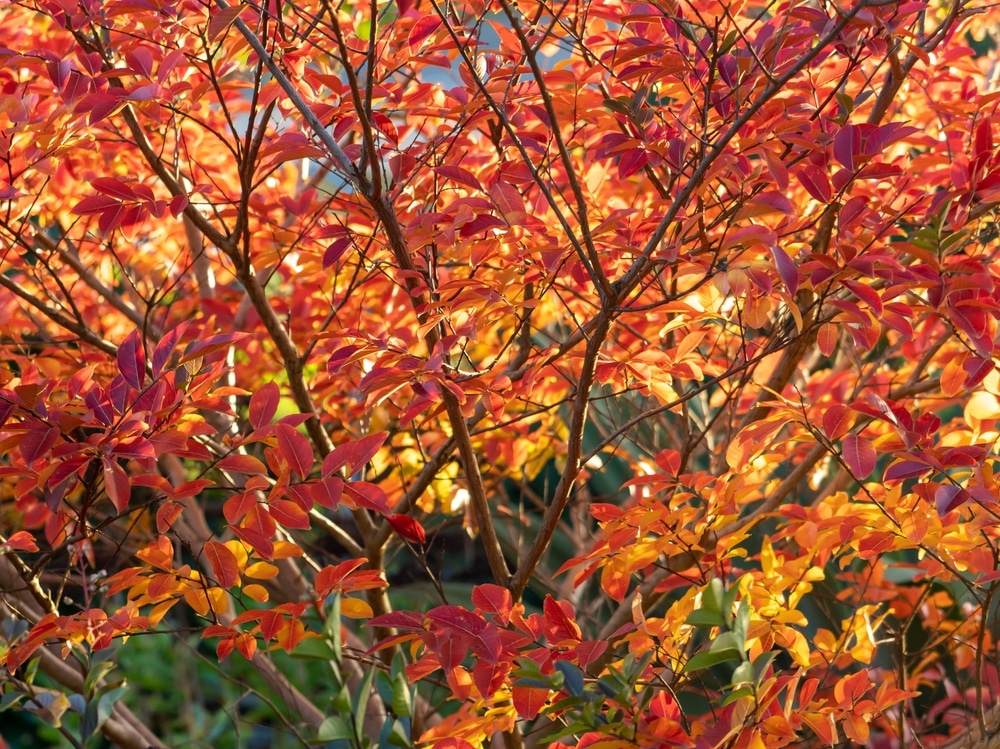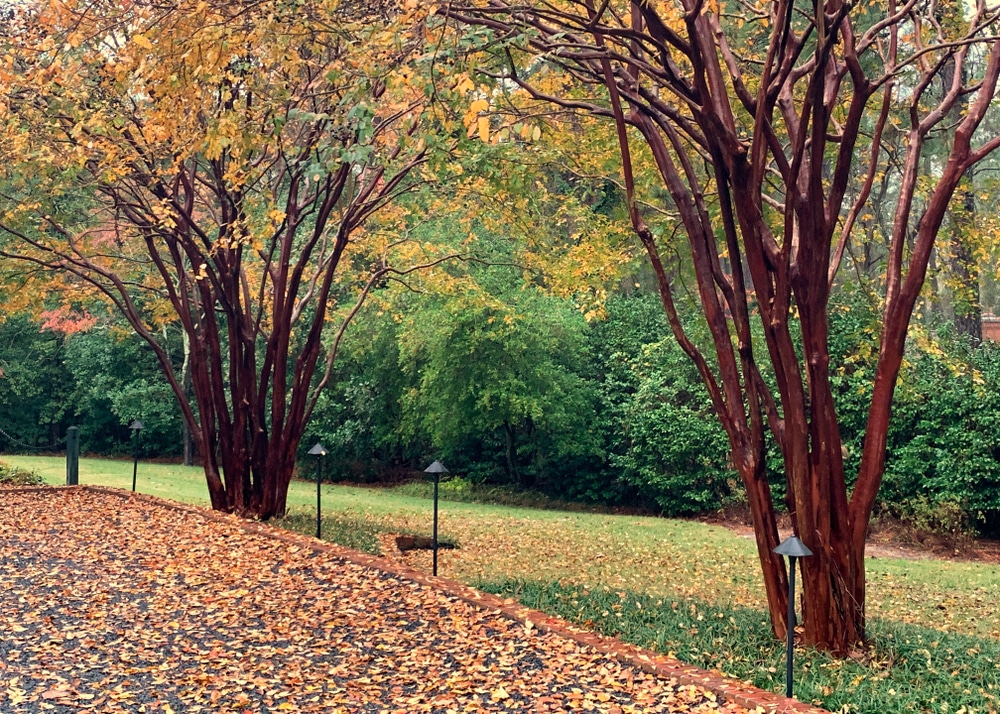The crepe myrtle is one of the most treasured flora in the United States. Its earthy peeling bark and explosively colorful petals make it a sight, unlike others. But, you may have seen crepe myrtles whose leaves aren’t emerald green but a mottled yellow on this Southern classic.
While it may be captivating to see the contrast between yellow foliage and flaming red, royal purple, or flourishing pink petals, these yellow leaves may signal that something is wrong with your crepe myrtle. As a result, if your crepe myrtle has yellow leaves, it’s crucial to investigate the cause and determine a solution.
What Are Leaves, Anyway?

It’s paramount to understand what leaves are and why they turn colors when determining why crepe myrtle leaves turn yellow.
Leaves are essential to a tree’s life, performing the necessary work of photosynthesis. This process happens when chlorophyll, a green pigment inside leaves, absorbs sunlight and converts it into sugar and starches. The preponderance of chlorophyll in a leaf gives it its natural emerald color.
Still, chlorophyll isn’t the only pigment in town. Leaves also contain orange, yellow, and red pigments. These colors usually aren’t visible given the immense amount of chlorophyll, but when plants stop making food, the chlorophyll breaks down, and those warmer colors become visible.
As a result, you can generally assume that your trees leaves are turning yellow because, for some reason, their chlorophyll is breaking down.
Cause 1: It’s Autumn
The least troublesome reason crepe myrtle leaves are turning yellow is that, well, it’s autumn!
Even in the southeastern United States, where autumn and winter are relatively mild, many plants still display wondrous shades of red and gold as their food-making processes slow down. Crepe myrtles are no exception.
If it’s later in the year, especially October or November, it is likely a natural phenomenon if your crepe myrtle is getting yellow leaves. It might even be something to enjoy! While your crepe myrtle puts on a dazzling show of magenta and mauve in the spring and summer, autumn is the time for it to take a curtain call with volcanic orange and radiant yellow.
That said, the rest of the causes on this list belong to the not-so-natural category.
Cause 2: Drought
A less felicitous reason for yellow leaves is that there is a drought. When plants lack the moisture to keep up their natural processes, their ability to make food slows down or stops. In practical terms, this means that the plants stop producing chlorophyll or that their chlorophyll breaks down entirely.
Without chlorophyll, a crepe myrtle’s leaves will show a less-than-attractive yellow color.
Cause 3: Toxicity
A more nefarious reason for yellow crepe myrtle leaves is that a toxin has entered the tree.
Since the leaves on a crepe myrtle tree are parts of its body, not just lifeless appendages, they reflect the health of the entire tree. As a result, yellowing may occur if the tree has poison exposure from an external source, such as an herbicide or pesticide.
To address this issue, give the tree a thorough watering to drain toxins.
Cause 4: Disease
The final cause of yellow crepe myrtle leaves is a disease. One of the most common diseases in crepe myrtles is leaf scorch, a fungus endemic to the southeastern United States. The most common symptom of leaf scorch is yellowing leaf tips–and unfortunately, the most common treatment is to remove and burn the tree entirely.
Final Thoughts
Although it’s frustrating when your crepe myrtle’s verdant leaves have turned a sickly yellow, don’t give up. It’s entirely within your power to find the cause, fix it, and find a way to salvage the beautiful tree. Other common problems crape myrtle trees suffer from is delayed blooming or not blooming at all in the spring months.
